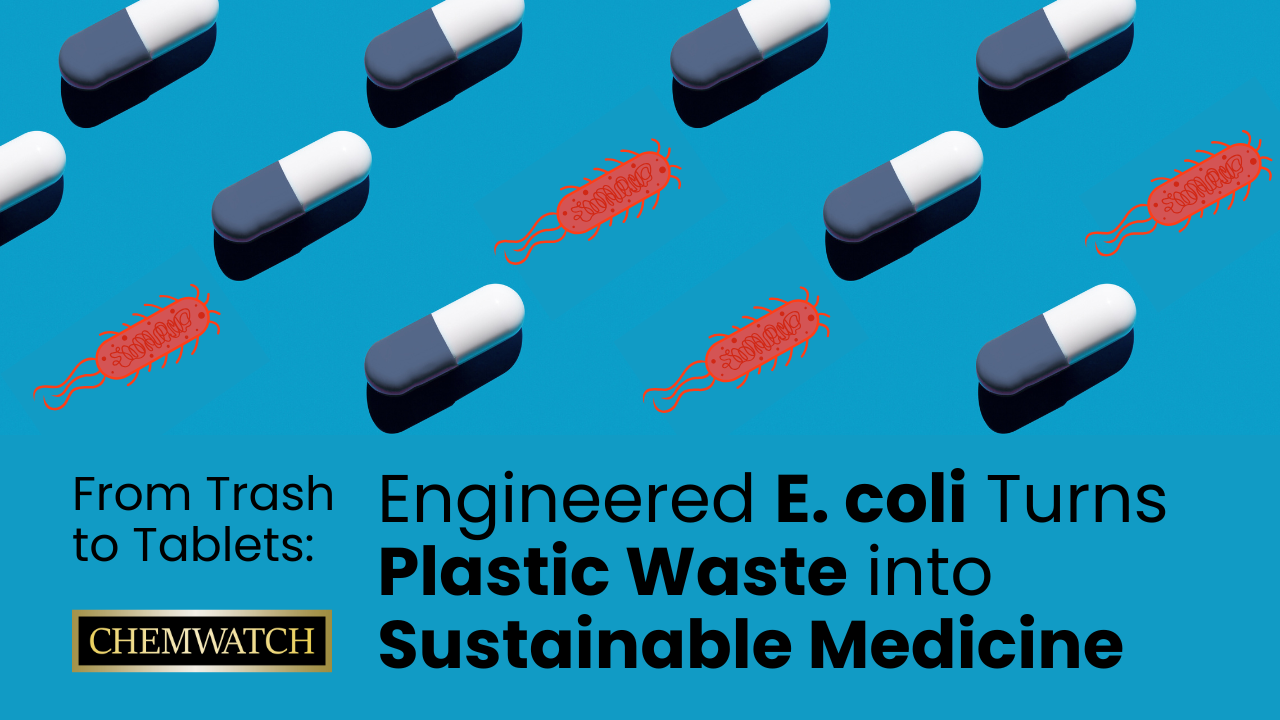
In a breakthrough that blends science fiction with reality, researchers have engineered Escherichia coli (E. coli)- a humble gut bacterium- to convert plastic waste into paracetamol (acetaminophen), one of the most widely used painkillers. This green innovation could solve two major global challenges simultaneously: the plastic pollution crisis and the urgent need for pharmaceutical sustainability. By harnessing microbial engineering for waste-to-value conversion, we’re moving closer to a cleaner, circular economy.
In this article, we unpack the science behind this transformation and why it's drawing attention from the chemical industry.

Plastic waste remains a mounting global issue. Statista reports that roughly 400 million tonnes of plastic are produced annually, yet less than 10% is recycled effectively. The rest pollutes landfills, oceans, or is incinerated. Concurrently, pharmaceutical manufacturing heavily relies on petrochemical feedstocks and energy-intensive processes.
Led by scientists at the University of California, Davis, this new research showcases how metabolic engineering can rewrite that story by enabling the bioconversion of plastic waste into life-saving drugs.
At the heart of this innovation lies synthetic biology and the biotransformation process. Scientists modified E. coli strains to metabolise terephthalic acid (TPA)- a key product of PET plastic breakdown—into paracetamol.
This approach exemplifies a circular chemistry solution, where plastic is converted into pharmaceutical products via sustainable chemical manufacturing.
This isn’t just a novel lab experiment—it signals major potential for eco-friendly pharmaceutical production. Here's why this matters:
This also aligns with global green chemistry challenges, including cleaner processes, reduced hazards, and pharmaceutical sustainability initiatives like CHEM21.
Despite its promise, several challenges remain on the path to industrial adoption:
Nonetheless, this research lays the groundwork for broader applications: vitamins, dyes, agrochemicals, all from plastic via engineered microbes.
This microbial alchemy, converting waste into wellness, showcases how engineered E. coli can drive the future of sustainable pharmaceuticals. By integrating synthetic biology, metabolic engineering, and circular economy principles, researchers are reimagining what waste can become.
As green innovation takes centre stage, these efforts are more than scientific curiosities—they’re a critical path forward for industries embracing waste-to-value conversion and reducing environmental impact.
Breakthroughs like the biochemical conversion of plastic waste into pharmaceuticals signal an exciting shift toward sustainable chemical manufacturing and circular chemistry. But as new materials, processes, and engineered organisms emerge, so too does the need for robust chemical risk management, regulatory compliance, and hazard communication.
At Chemwatch, we help organisations stay ahead of these challenges. From SDS authoring and management to chemical inventory tracking, GHS classification, and exposure risk assessments, our solutions are built to support evolving industries—including those pioneering eco-friendly pharmaceutical production and synthetic biology applications. Need expert help understanding sustainable chemical manufacturing and circular chemistry, or managing your chemical inventory? Contact Us today!
Sources